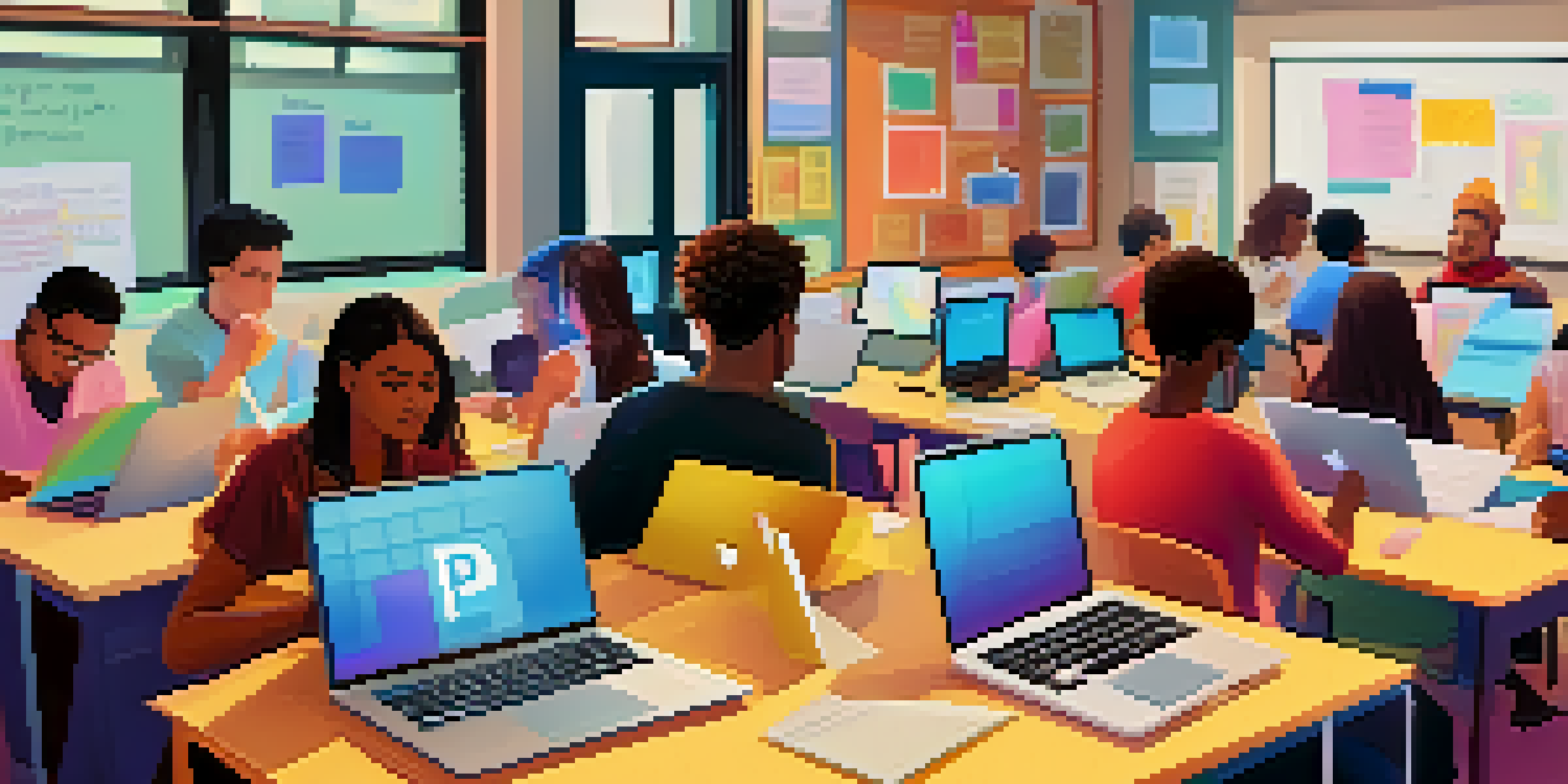Facilitating Peer Learning in Online Education Environments

Understanding Peer Learning in Online Education
Peer learning refers to a collaborative educational approach where students learn from one another. In online environments, this method can bridge the gap created by physical distance, fostering a sense of community. It encourages active participation and enhances critical thinking skills, making the learning process more engaging and effective.
Creating a Supportive Online Community
Building a supportive online community is crucial for facilitating peer learning. This can be achieved through discussion forums, social media groups, or dedicated platforms where students can interact. When learners feel connected, they are more likely to share ideas, ask questions, and support each other’s learning journeys.
Peer Learning Enhances Engagement
Collaborative learning fosters a sense of community and encourages active participation, making the educational experience more engaging.
Utilizing Collaborative Tools and Technology
Leveraging technology is essential for effective peer learning. Tools like Google Docs, Slack, or Zoom enable students to collaborate in real-time, making group projects seamless. These platforms not only facilitate communication but also help students develop digital skills that are vital in today’s workforce.
Encouraging Interactive Assignments
Interactive assignments can significantly boost peer learning by encouraging collaboration. For instance, group presentations or peer review activities allow students to engage with each other's work. This not only enhances understanding but also nurtures a sense of accountability among peers.
Technology Facilitates Collaboration
Utilizing tools like Google Docs and Zoom enables real-time collaboration, helping students develop essential digital skills.
Facilitating Peer Feedback and Support
Peer feedback is a powerful tool in online education. Encouraging students to provide constructive criticism helps them reflect on their work and learn from their peers. This two-way feedback process fosters a culture of continuous improvement and enhances the overall learning experience.
Promoting Diverse Perspectives through Group Work
Group work in online settings brings together diverse perspectives, enriching the learning experience. When students from different backgrounds collaborate, they expose each other to unique viewpoints and ideas. This diversity not only fosters creativity but also prepares students for real-world teamwork situations.
Diverse Perspectives Enrich Learning
Group work brings together students from various backgrounds, enhancing creativity and preparing them for real-world teamwork.
Setting Clear Expectations for Peer Interactions
To ensure effective peer learning, it’s vital to set clear expectations for interactions. Guidelines on respectful communication, deadlines for group tasks, and criteria for peer evaluations help create a structured environment. When students know what is expected of them, they are more likely to engage meaningfully.
Evaluating the Impact of Peer Learning Strategies
Regularly evaluating the effectiveness of peer learning strategies is essential for continuous improvement. Gathering feedback from students can provide valuable insights into what works and what doesn’t. By adapting methods based on student experiences, educators can enhance the overall quality of online learning.